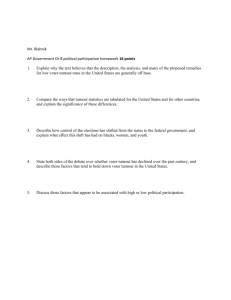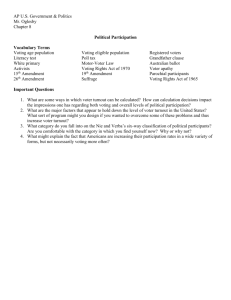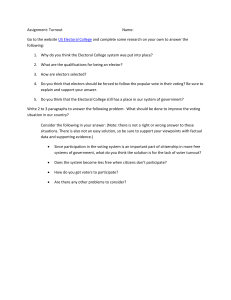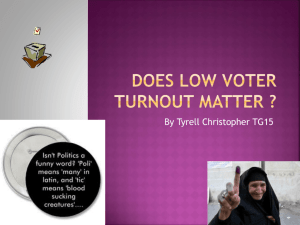AP GOVERNMENT Political Participation Chapter 6
advertisement
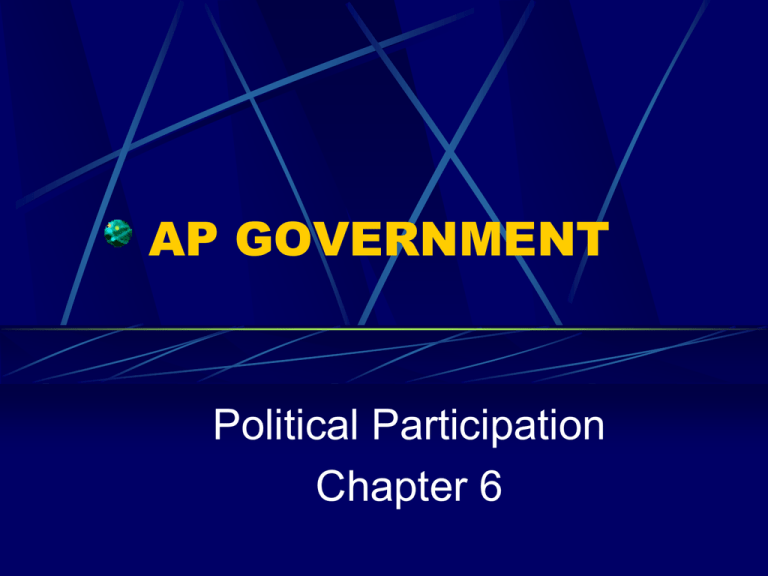
AP GOVERNMENT Political Participation Chapter 6 Nonvoting Problem: Low Voter Turnout Only 2/3 of the voting age in the US register to vote About 87% of the registered voters participated in the last election TABLE 6.1 How to get people to register? 1993 Motor Voter Law States must allow voter registration when getting a driver’s license By mail At local govt offices (post offices and welfare offices) Not much of an impact on voting Other factors… Voting is only one way of participating in politics Americans COULD participate in politics MORE than most Europeans Low registration could also mean most people are satisfied with how the country is governed (SILENT MAJORITY?) Late 1700’s - only white, male, property owners or taxpayers By 1837 - all white males 1870 – all men (15th) But not really until the 1960s b/c of literacy tests, poll taxes, no primary elections (South) Illiterate and/or poor whites were protected by the Grandfather clause 1920 – women (19th) 1971 – 18 and older Does voting patterns change with new members of the electorate? AAs increased the number of voters after the Voting Rights Act of 1965 TABLE 6.2 Changed how white politicians campaigned Women also increased the number of voters However, pattern didn’t really change the voting Voter Turnout With new members of the electorate, voting turnout should increase… However, turnout has declined Figure 6.2 Is the decline fact or fiction? Page 136 ( b/c of honest counting today) Voting Fraud Australian Ballot Uniform and printed by the govt Decreased voter fraud Scholars see registration as the reason for voter turnout Who participates in Politics? Voting is the most common form Giving $ and being a member of a political organization is the least common People exaggerate their participation Six Forms of Participation 1. 22% of the population are completely inactive (rarely vote and don’t get involved) Little education, low income 2. 11% are activists (complete opposite) High education, high income, older 3. Voting Specialists – only vote Lower than average education and income, little older than average 4. Campaigners – vote and get involved More educated than average, clear id with party, willingness to take strong position 5. Communalists – like campaigners but do not like conflict Activities that are nonpartisan Get involved/registration drives 6. Parochial Participants – do not vote and do not get involved in campaigns but will deal with specific problems The Causes of Participation Schooling Religious involvement Age Not really race (b/c of schooling and income but when equal, AAs vote more than whites)

